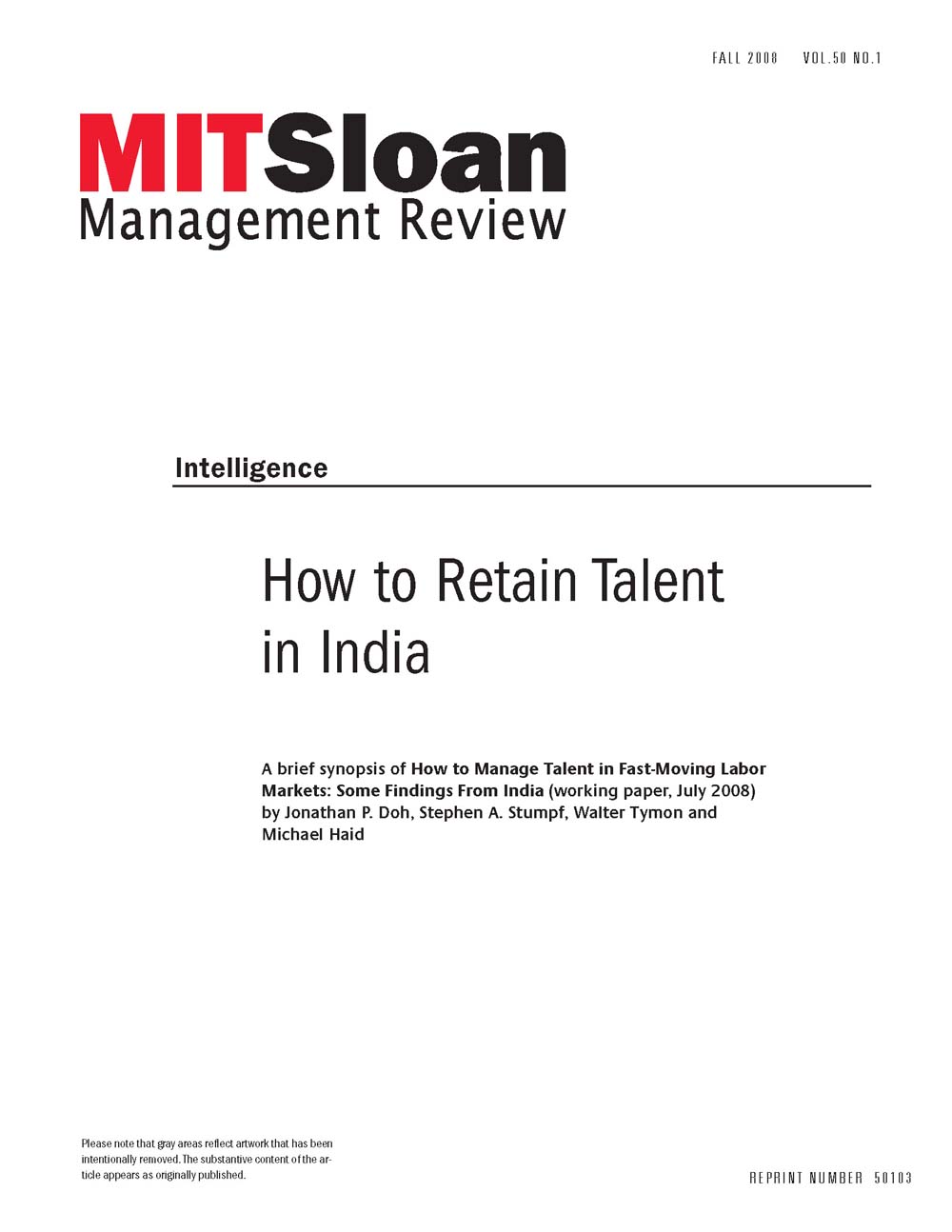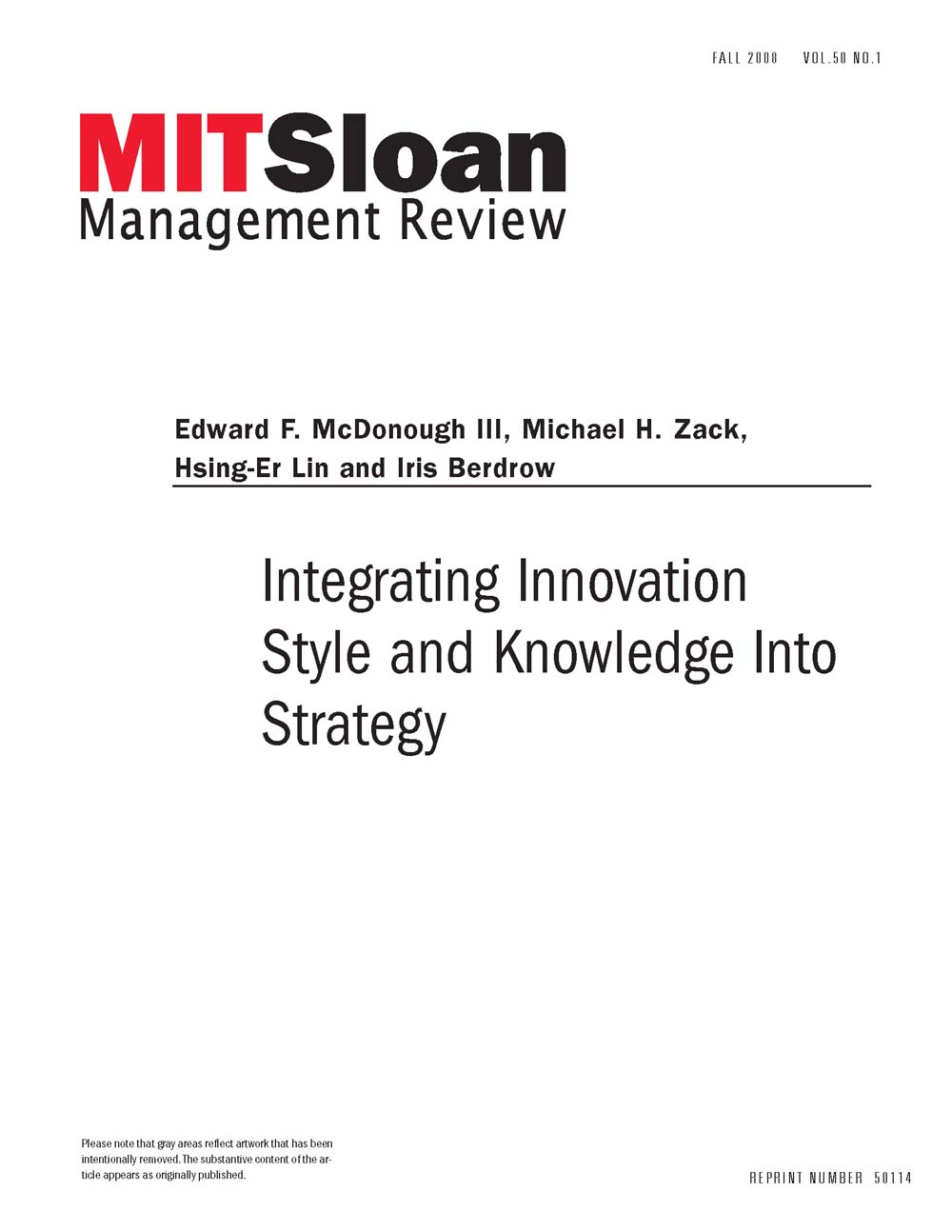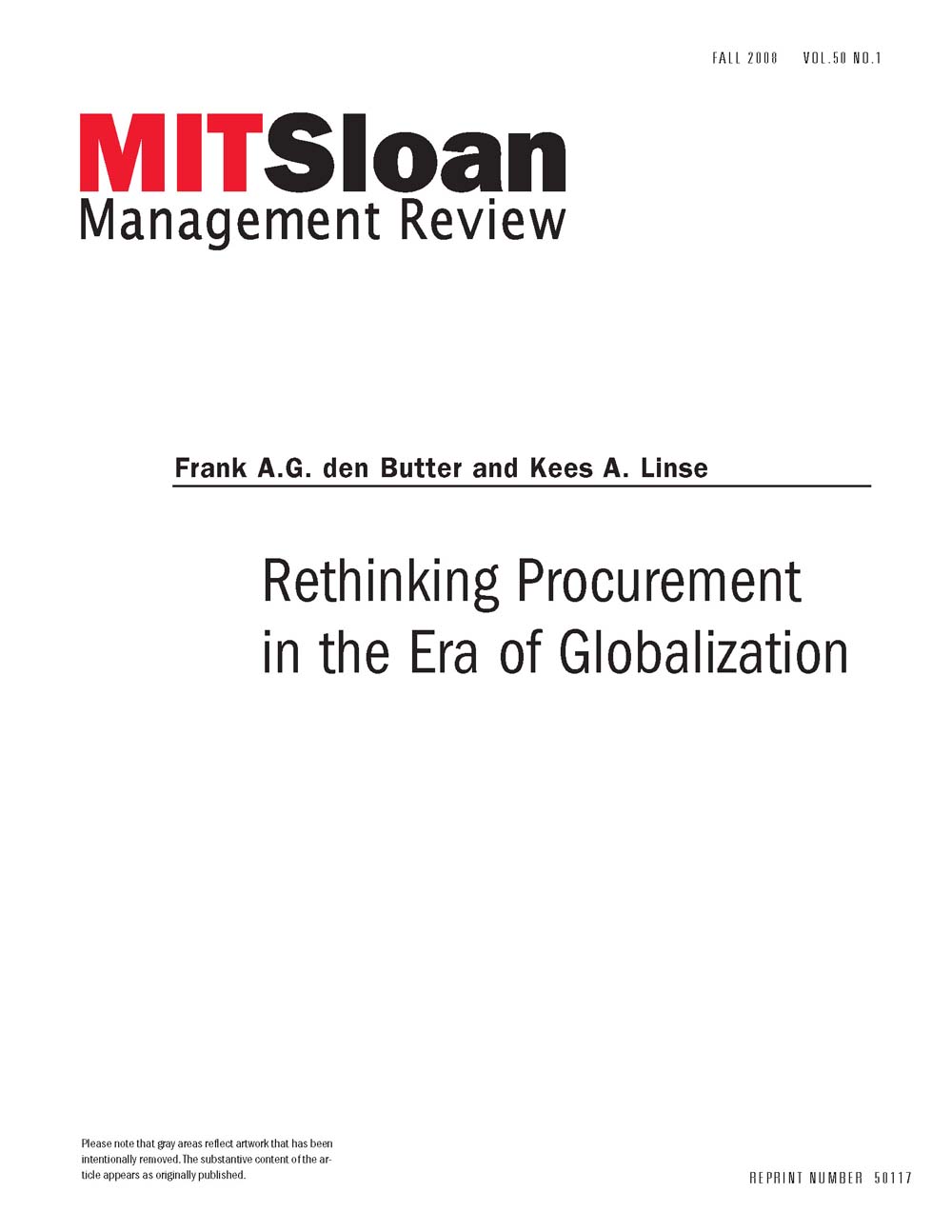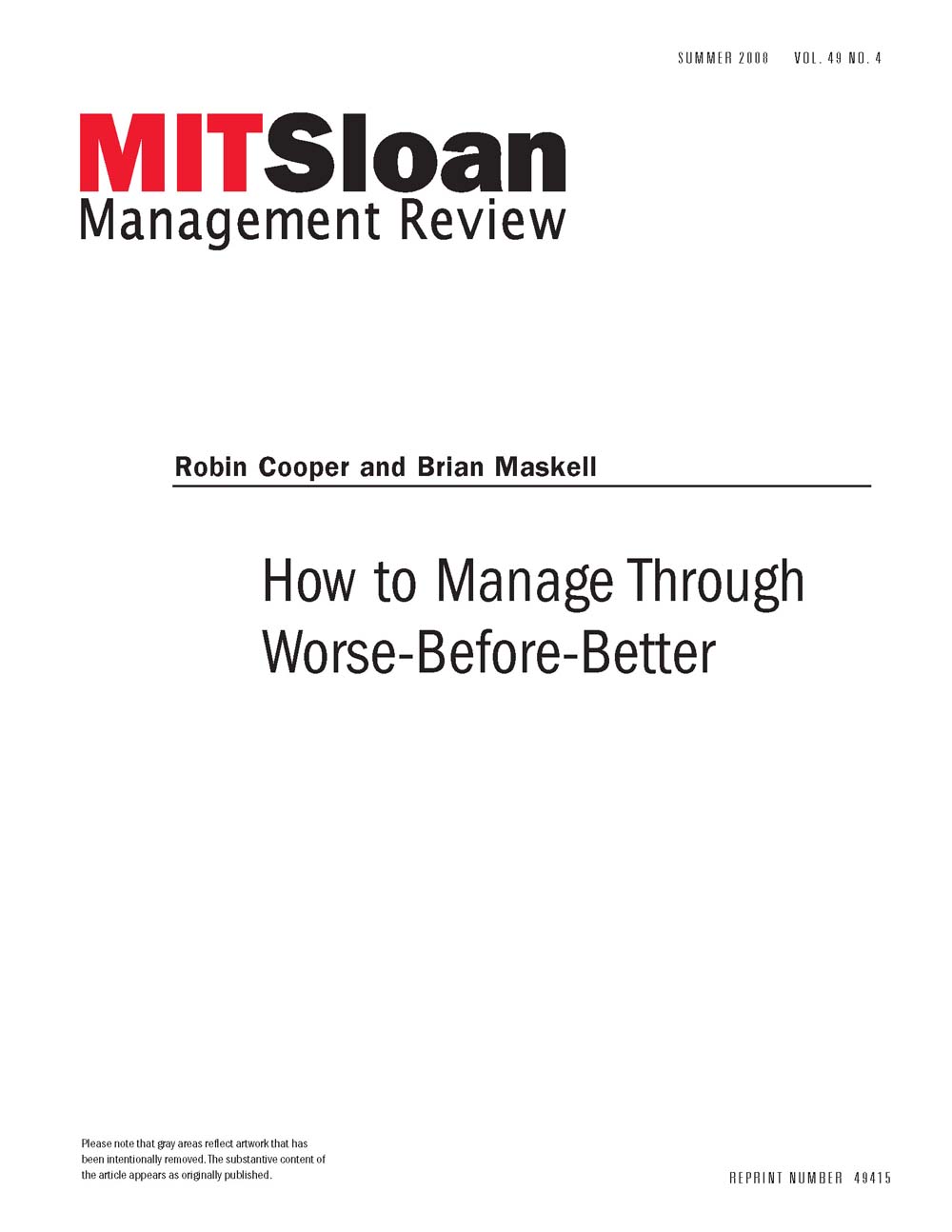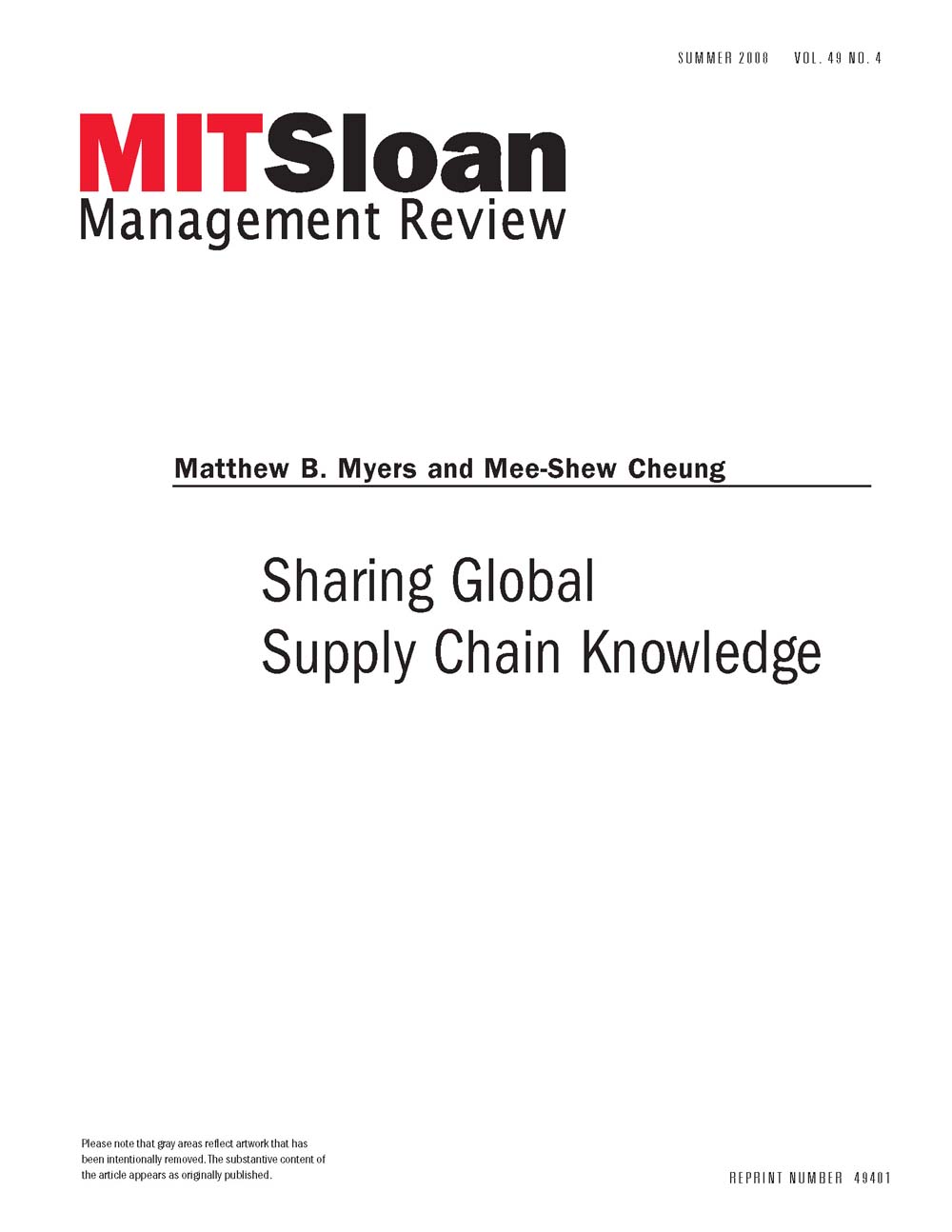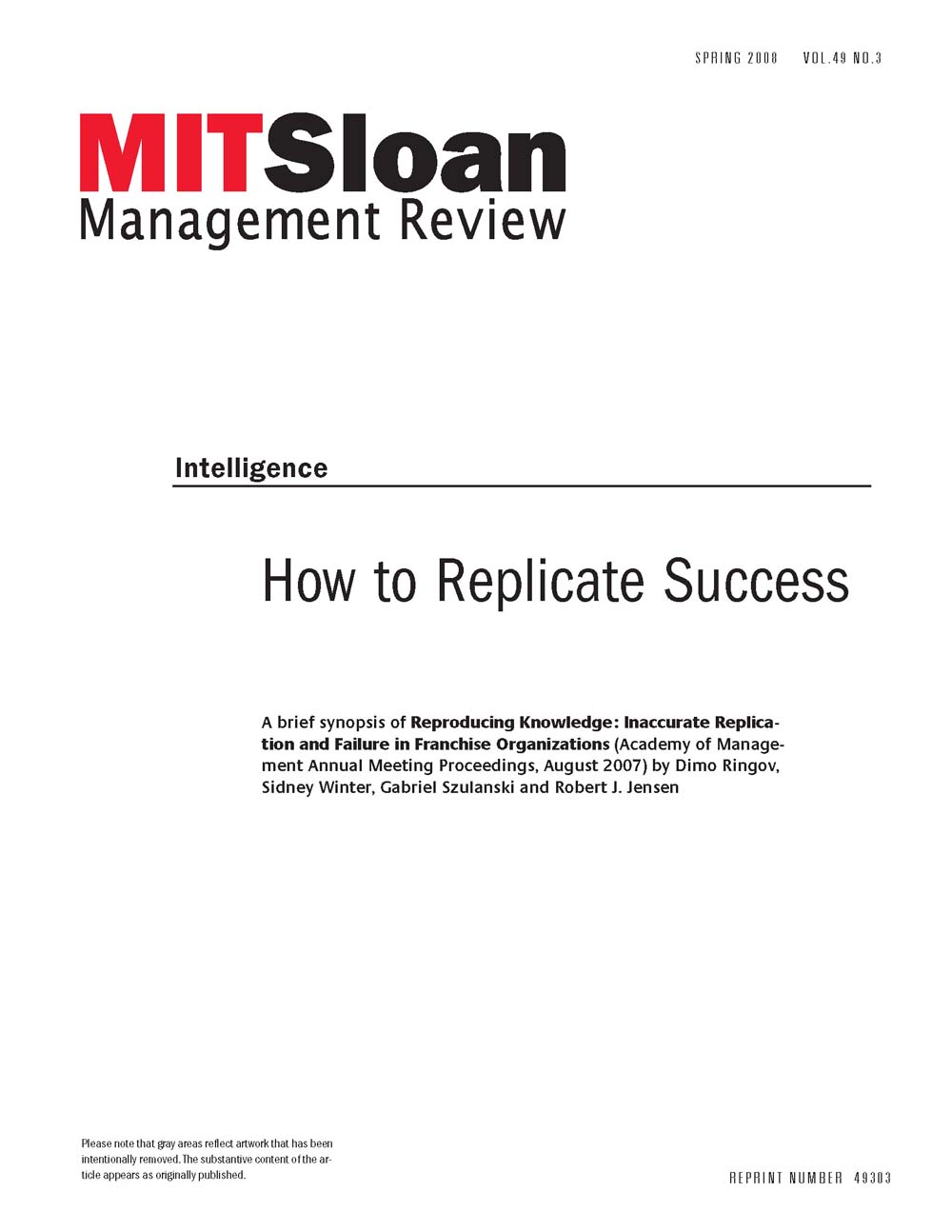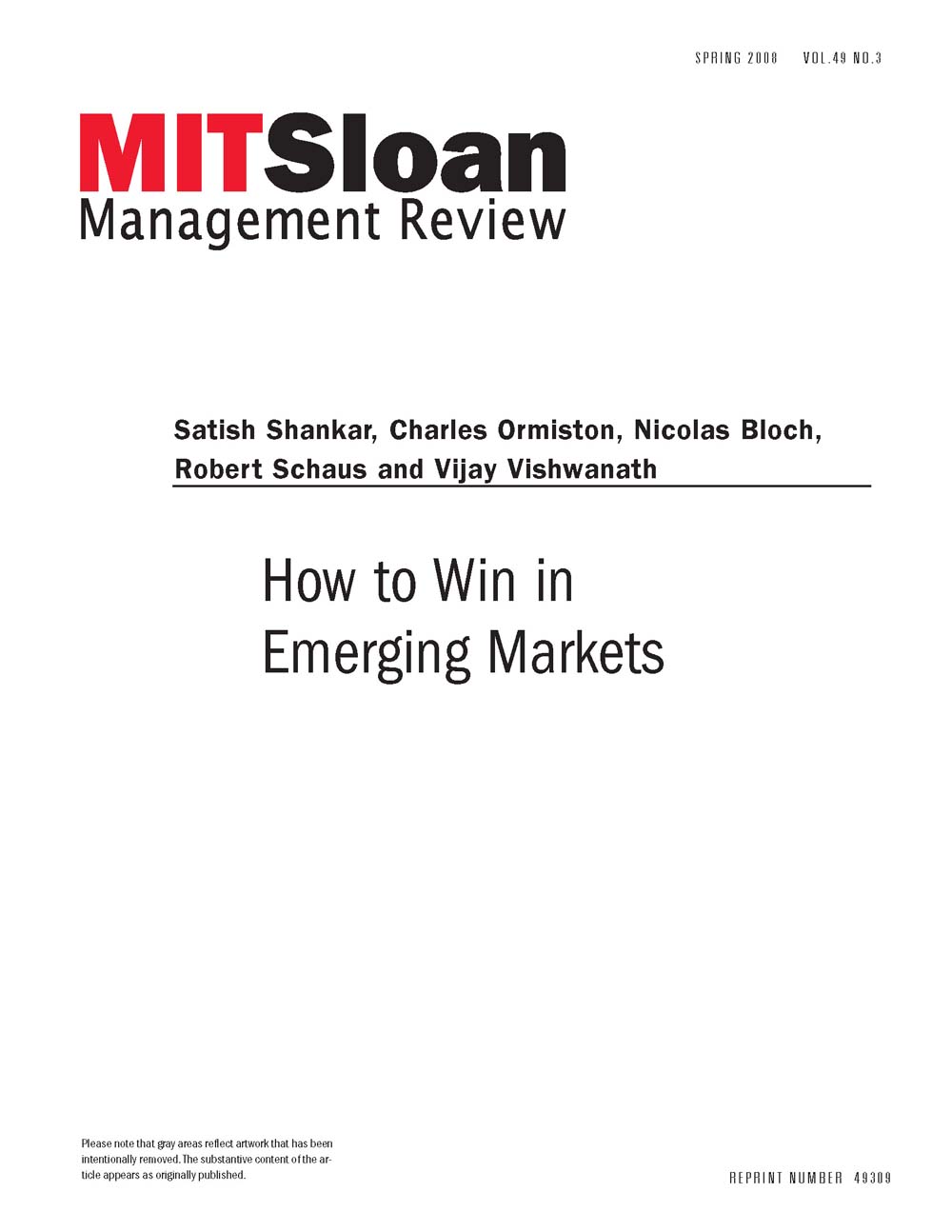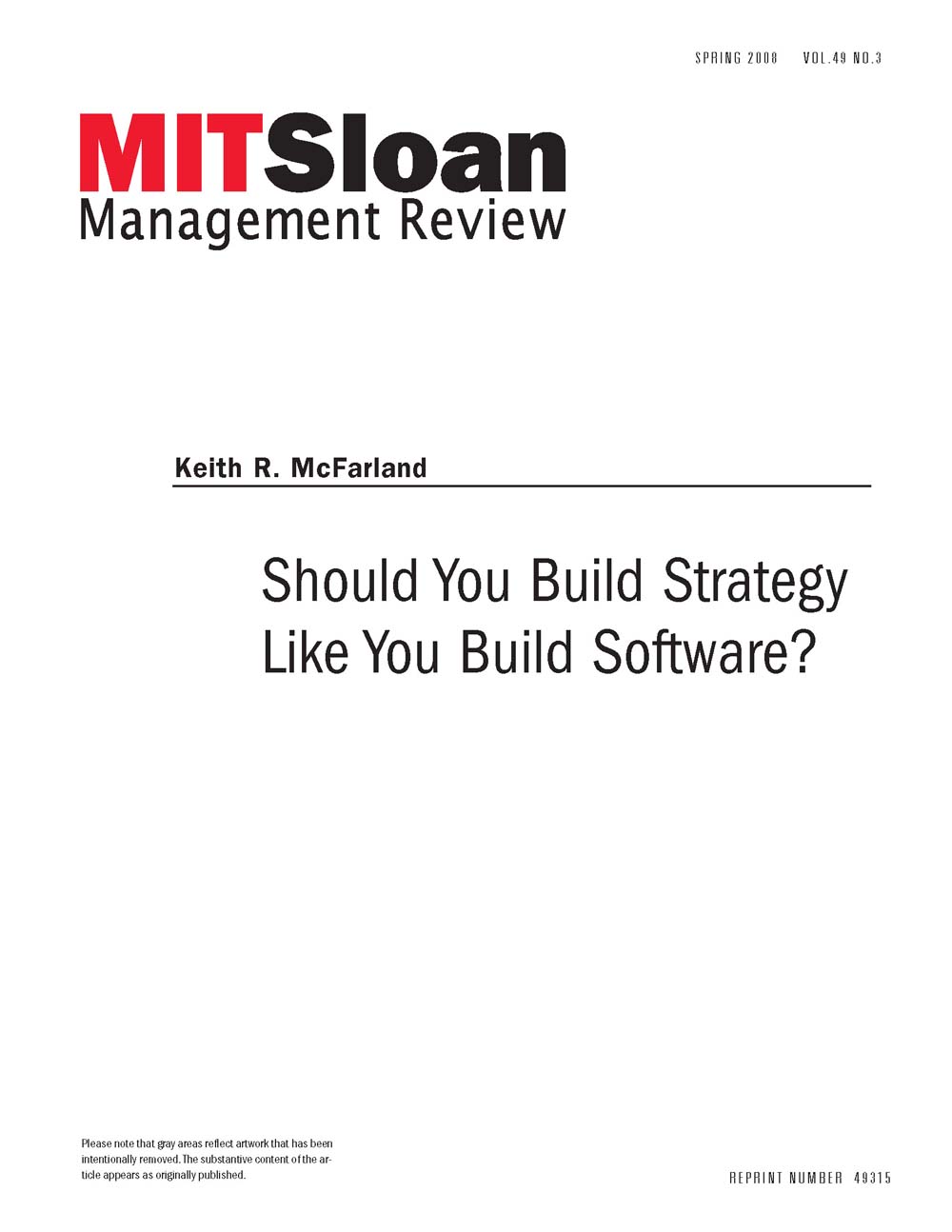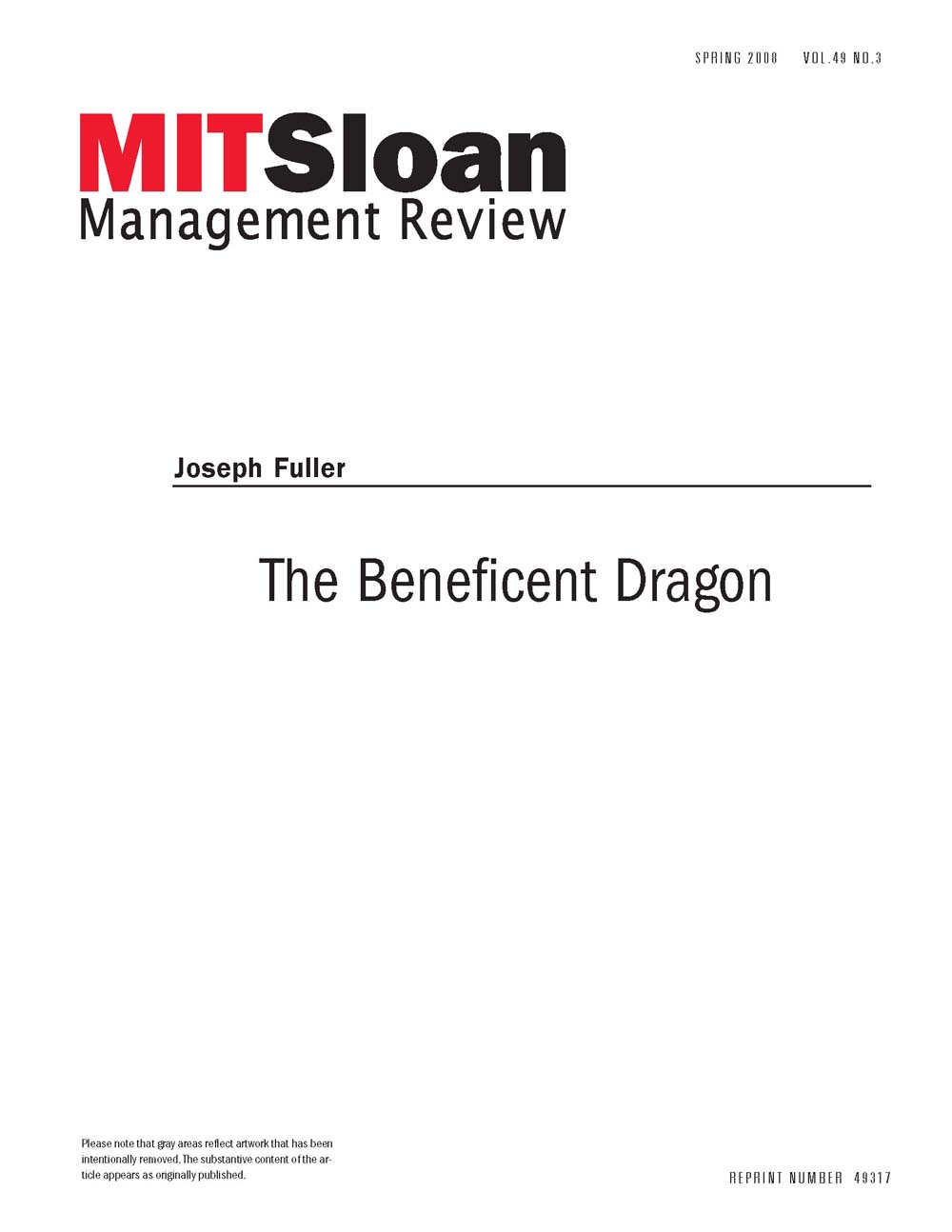Providing support, training and opportunities from day one is critical.
Strategy P. 12
Page 28 of 46
-
Integrating Innovation Style and Knowledge Into Strategy
The way we think about strategy is woefully incomplete, the authors contend. The traditional idea of focusing on the positioning of products (or services) underplays much of what most would agree makes a company truly competitive. Not only does it give short shrift to what a company knows, it ignores completely the fact that in today’s dynamic economy, organizations have to continually reinvent who they are and what they do in large and small ways. And one important means of doing so is through innovation. An effective strategy, then, is comprised of three key components: product/market, knowledge and innovation positions. But even if a company masters the three strategic positions of product/market, knowledge and innovation independently, it is still at risk. Only when all three positions are aligned and mutually reinforcing can a strategy succeed. In adopting the notion of alignment, organizations need to view each position & #8212; product/market, knowledge and innovation & #8212; as aspects of an organization’s overall strategy. Creating an integrated strategy thus requires focusing not on each position separately, but rather on all three positions simultaneously. The authors introduce the notion of competing based not only on what an organization makes or the service it provides, but on what it knows and how it innovates. Each aspect represents a competitive position that must be evaluated relative to the capabilities of the organization and to others in the marketplace battling for the same space. And each component must not only be aligned with the other two, but it needs to be adjusted as circumstances warrant. When done correctly, organizations & #8212; such as Buckman Laboratories, which is profiled here & #8212; thrive. When done badly, the company can suffer, and perhaps fatally so, as the history of Polaroid points out.
-
Rethinking Procurement in the Era of Globalization
The role of procurement within global companies has changed dramatically over the past 25 years from that of simply buying goods and services to overseeing an integrated set of management functions. This brings new challenges and opportunities to procurement. Offshoring and the increased emphasis on specialization and fragmentation of production enhance the strategic character of procurement decisions. Increasingly, procurement decisions have become intertwined with strategic management in general. In this article, the authors discuss the changes in procurement from the perspective of transaction cost economics. They separate transaction costs into “soft” and “hard” costs and differentiate between the internal and external factors that affect these costs. In making procurement decisions, the authors argue, managers need to consider the full range of cost elements. In addition to traditional transaction costs such as transport costs and tariffs, managers need to recognize such elements as cultural and legal differences, government regulation, social preferences, environmental issues, political stability and risks involved in unethical business behavior. The authors argue that knowing the risks and opportunities of the different exposures is a critical management competence. Although management decisions originate in many different parts of the company, procurement managers need to keep a close eye on the various cost exposures and flag concerns as they arise. Procurement, therefore, will need to become more closely connected with strategic decisions throughout the company. This broader view represents a major extension of the concept of total cost of ownership in procurement decisions. Global sourcing creates many new opportunities for value creation, which well-run companies must learn to take advantage of.
-
How to Manage Through Worse-Before-Better
Many Western managers were introduced to lean production in 1990, with publication of The Machine That Changed the World, based on a five-year study of Toyota by MIT's International Motor Vehicle Program. Since then, thousands of managers have been drawn to the principles of lean management as a way to achieve faster cycle times, reduced defect rates and sharp gains in on-time deliveries. Lean management permits a marked reduction in inventory levels required across the supply chain. These changes should result in better financial performance, especially because companies achieve simultaneous declines in manufacturing and service costs. But, as the authors point out, the transition takes time, and it is full of obstacles. One of the biggest and most predictable hurdles is the crisis in confidence that occurs when management isn't able to improve financial performance quickly enough. Lean transformations generally have short-term adverse impacts on the company's bottom line (that is, things get worse before better). Management needs to anticipate these challenges and explain them clearly. To help managers overcome the financial hurdles on the path to lean, the authors offer new tools for anticipating the deterioration in financial performance that invariably occurs as a mass producer goes lean and for understanding the real performance improvements that take place during this period. Their approach, which they call "value-stream accounting," helps managers plan for the short-term financial impact, monitor progress, understand the operational improvements and develop strategies to maximize the longer-term benefit. Traditional accounting systems are not designed to show the causes of adverse impacts or reveal the future benefits that will accrue from improved operational processes. Managers need to understand that the "bad" news isn't really bad -- it's part of the necessary process of establishing a stronger, more productive organization. The authors' approach replaces the traditional cost-accounting system with a transparent accounting system that tracks the company's value streams, which incorporate all of the value-adding and non-value-adding activities required to bring a product or service from start to finish.
-
Linking Customer Loyalty to Growth
In recent years, researchers and consultants have advanced a number of customer metrics to explain the connections between customer behavior and growth. But these efforts have generated more smoke than heat. Despite claims to the contrary, the authors argue that the most popular metrics have shown only modest correlations to growth. None of them have shown themselves to be universally effective across all competitive environments. Early customer metrics tried to explain why people buy. To many companies, it came down to marketing. Yet, as the authors explain, the issues that affect customer loyalty are complex and go beyond standard marketing. This gave rise to a new category of metrics aimed at understanding the customer experience. Although managers have learned a lot about the components of service quality (including reliability, responsiveness and empathy), the approach doesn't point managers to specific actions they can take. Beginning in the 1990s, many managers began paying closer attention to customer retention -- in particular, understanding what makes for dissatisfaction and satisfaction. But as the authors note, the linkages among satisfaction, customer behavior and positive financial outcomes have been modest. Today's most popular metric, the Net Promoter Score, focuses on how customer word of mouth -- both negative and positive -- can advance growth. Developed by Bain & Company Inc. consultant Fred Reichheld, it claims the ability to predict future growth from customer replies to one question: "How likely is it that you would recommend this company to a friend or colleague?" The authors found that the linkage between the Net Promoter Score and subsequent customer behavior was modest at best; models based on multiple variables consistently outperformed models based on Net Performer. The authors are skeptical that there can be a single metric that reduces complex, multifaceted constructs to one or two dimensions; if there is, they write, "there's a good chance it will ignore one or more important aspects of the equation."
-
Sharing Global Supply Chain Knowledge
In global supply chains, managers have consistently struggled with sharing valuable knowledge with buyers and suppliers across borders. Increasingly, talk of the "dark side" of collaborative relationships has left managers wondering who benefits most from knowledge-sharing activities: their companies or their partners. In order to find the answers to these questions, the authors conducted an in-depth study of more than 100 cross-national supply chain partnerships in the industrial chemicals, consumer durables, industrial packaging, toy and apparel industries in multiple locations in 19 countries. Knowledge sharing encompasses the sharing of information, but it doesn't stop there. Much of the information that companies share -- data on inventory levels, sales, production schedules and prices -- is easy to codify and transmit. But other types of knowledge are more difficult to codify: know-how, managerial and communication skills, and organizational memory. Intercompany knowledge sharing is a joint activity between supply-chain partners; the parties share knowledge and then jointly interpret and integrate it into a relationship-domain-specific memory that influences relationship-specific behavior. The authors found three types of knowledge sharing within the supply chain, each offering distinct benefits to buyers and suppliers: information sharing, joint sense making and knowledge integration. They also found that no matter how "diverse" the home cultures of the buyer and supplier companies, these differences had no impact on the propensity to share knowledge. Drawing on examples from the auto (Toyota), aerospace (Boeing, Lockheed Martin and United Technologies) and toy industries, they examine how different types of knowledge sharing can benefit buyers or sellers individually, but more importantly, how it can enhance the performance of the partnership as a whole. They conclude that, while suppliers generally benefit more from knowledge-sharing activities, both buyers and suppliers profit; understanding the benefits of absolute versus relative gains is critical when building world-class global supply chains. Sharing knowledge effectively means understanding that a disparity in benefits is part of what it takes to build partnerships that last.
-
How to Win in Emerging Markets
Asia, Latin America and Eastern Europe are delivering strong revenue and profit growth.
-
Should You Build Strategy Like You Build Software?
Strategy is a mechanism through which a company makes sense of the world around it. It is a collection of ideas about how the company intends to win, the source code upon which everything else depends. Because strategy can only capture a company's best thinking at a given point in time, the author argues that strategy, much like a software program, needs to be updated and refined as people gain new experience and knowledge. With traditional approaches to strategy development, the author argues, planning is optimized for the original targets; it is difficult to change directions once implementation is under way. Adaptive processes, by contrast, help companies create and adapt strategy quickly and iteratively, so that people can effectively triage issues and allocate resources in changing environments; they are optimized to identify the best ideas and to ensure that individuals throughout the organization have access to the latest version so that everyday actions can be aligned with the most important strategic insights. Since people throughout the organization play roles in the company's strategic success, strategy development needs to tap into ideas from everywhere. This requires opening up the process to people throughout the organization, permitting extensive face-to-face collaboration, and arranging for individuals other than senior executives to facilitate important strategic discussions. Drawing extensive comparisons with software development and using examples from companies including Metrowerks and Shamrock Foods Co., the author focuses on three major themes: having an iterative, or "spiral," approach versus a linear approach; organizing the strategy-making process around people rather than processes; and the recognition that in strategy there is no such thing as a "silver bullet." Most managers operate in settings that are too dynamic and complex for simple success recipes. Instead of seeking long-term sustainable advantage, good managers need to create sustaining advantages on an ongoing basis.
-



